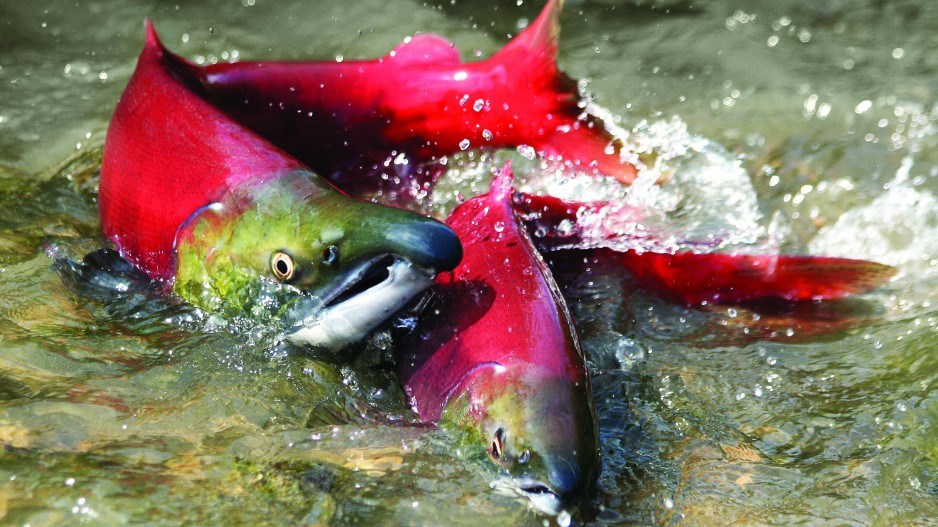It may not be on the scale of the Hell’s Gate rock slide that devastated Fraser River salmon populations in the early 1900s, but a rock slide that occurred a week and a half ago near on the Fraser River near Clinton could require a fish rescue operation.
A rock slide that occurred sometime between June 21 and 22 created a five-metre waterfall upstream of Big Bar that may make it difficult for returning salmon to make it up past the barrier to get to spawning grounds.
It’s not the height of the waterfall, but the increased velocity of water that may make it difficult for salmon to get past the obstruction.
An acoustic monitoring device placed in the river above the slide indicates about 700 fish have made it past the barrier since Friday. Based on size, the data suggests most of those fish are chinook.
But until a monitor is installed below, fisheries officials won’t know just how many chinook and sockeye are still trapped below.
“We’re really happy that we can report that fish are getting through,” Jennifer Davis, director for Fish and Aquatic Habitat for the provincial government, said in a teleconference Wednesday, July 3.
“But we still don’t have the details around what proportion of those fish (below) are getting through.”
She said naturally decreasing water flows in the river could ease the passage for salmon below the slide. Once a monitor is installed below the slide, officials should get a better idea of how many fish are not making it past the barrier. They hope to have the monitor in place by Thursday.
If too many fish are found to be still stranded, federal and provincial officials may try a rescue operation, which could include installing fish ladders or removing the fish and transporting them by truck upstream.
“We’re looking at options to trap and move the fish past the site, should we need to pull that trigger,” Davis said.




